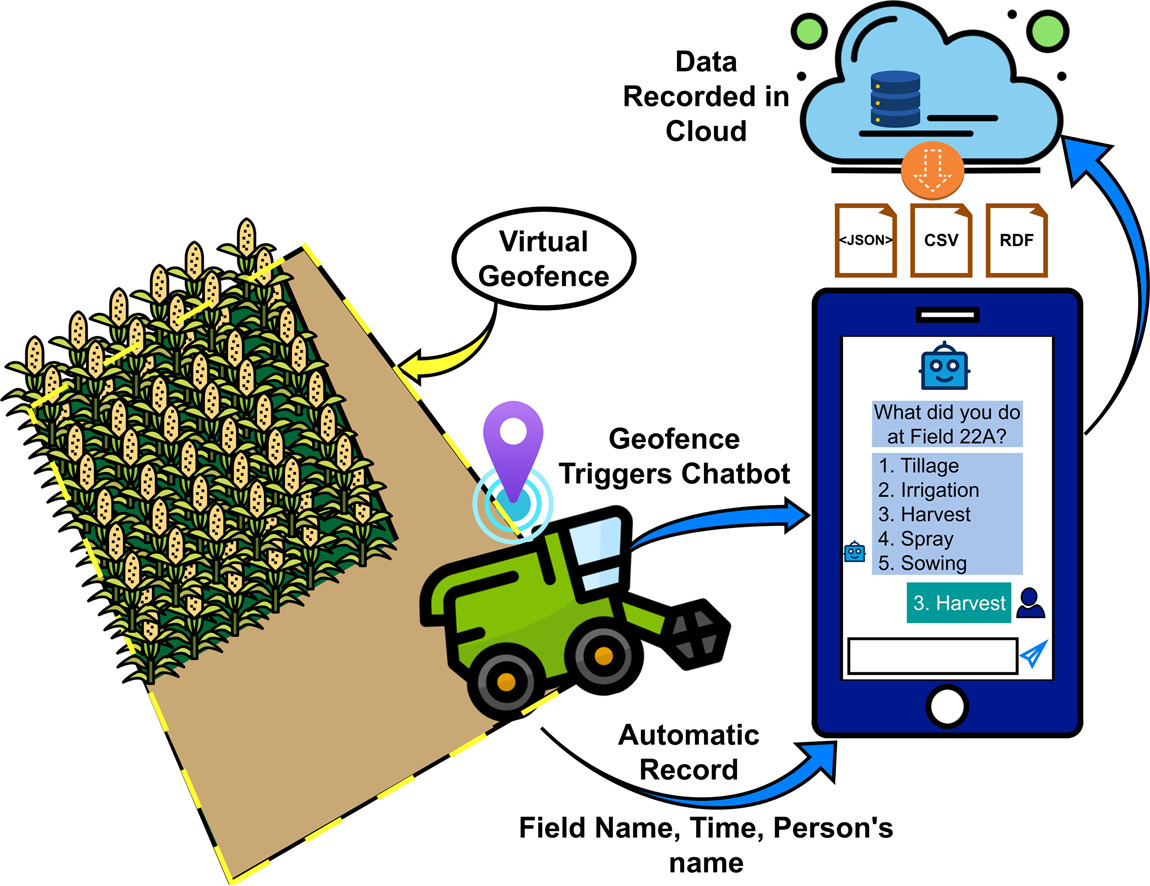
Understanding Corn Production Complexity: Causal Structure Learning and Variable Ranking from Agricultural Simulations
Corn (Zea mays L.) yield productivity is driven by a
Thrust 3: Agricultural Response Systems will create and deploy smart response systems that are driven by machine learning and decision-based models for precision agriculture. Thrust 3 will create techniques to manage uncertainty and fuse the spatially, temporally, and compositionally heterogeneous data from the field to collect not just more, but better data. The Thrust will build models, constrained by the biophysics of plants in agricultural fields, to establish a decision-Ag interface for growers to intelligently manage their fields in a cost-effective manner.
To develop and deploy a hybrid biophysical model-based and data-driven farm operations decision control system for timely and optimized responses across each stage of the crop lifecycle.
Thrust 3, with focus on agricultural response systems, keeps at the forefront the end goal of improved decision making (both strategic and tactical) while realistically dealing with many data challenges facing agriculture. Namely, the data in agriculture involves a wide range of spatial/time scales and modalities. The sensor data comes from assorted hardware and software platforms, some commercial and some “research innovations”. The data will not have the same native resolution (i.e., samples will be collected at different locations and time scales) and will include varying spatial, temporal, and measurement uncertainty. One early challenge to be met is to make this data autonomous and interoperable. That interoperability must be with other data as well as with biophysical or simulation models.
Standard approaches to fuse sensor information generally require co-registering all data on a shared rasterized grid, which introduce inaccuracies during the image registration and data rasterization process, which can significantly impede the performance of follow-on machine learning methods. To address this issue, we will develop multiple-instance, multiple-resolution sensor fusion techniques that account for spatial and registration uncertainty during analysis and automate the alignment between data at varying resolutions and formats.

Thrust 3 will develop a distributed and energy-efficient machine learning pipeline for streaming heterogeneous sensor data to address the traditional shortcomings of purely data-driven approaches, namely: (a) the need of large, curated, location-specific and time-dependent datasets, (b) sensor noise and complex plant geometry and (c) data annotation by domain experts. We will develop the infrastructure for farm-wide data acquisition (compatible with Ag data and metadata standards), farm model capture, treatment prediction, and intervention control strategies.

Thrust 3 will utilize biophysically-based models to inform data-centric approaches including the capture of spatial/temporal/spectral uncertainty for each stage of the crop lifecycle. Likewise, data-centric artificial intelligence (AI) and machine learning (ML) approaches will be used to inform, refine, and calibrate biophysical models. Early on, this will require humans in the loop for anomaly detection. Later, we aim to have autonomous data packaged models that yield accurate insights and recommendations. A key part of this work is to have targeted (smart/wise) sensing to capture data where uncertainty is large or impact of decisions weighs heavier on financial and environmental outcomes. Better data does not just mean more precise and accurate, but also refers to “data most pertinent” to decisions to be made. Doing this well will require an integration of AI/ML and mechanistic models regarding plants, soils, machinery, and labor.
Our system will have an intuitive, interactive analytics interface that allows farmers to make queries and receive recommendations with interpretability so decisions can be made with confidence. For example, the system will provide data predictive control of pesticide application based on past and current weather, plant health, and spatio-temporal intensity of infestation and disease to minimize overuse of pesticides. Another early application will focus on water management, accounting for flow derived from sensor data in complex water drainage systems, plant growth and stress, and nutrient based pollution. The recommendations will provide a set of executable scenarios with different intervention and response levels which the farmer can select for closed-loop deployment. Socio-economic evaluations will be conducted to build a convergent understanding of the impacts and opportunities of physical and cyber-physical system enabled precision agriculture.

Corn (Zea mays L.) yield productivity is driven by a

The loss of agricultural biodiversity will compromise societal ability to

The curse of dimensionality in genomic prediction has been established

Modern agricultural systems produce high-resolution data from remote sensing platforms,

Crop yield prediction is critical for agricultural insurance, better risk

Synthetic genetic circuits in plants could be the next technological